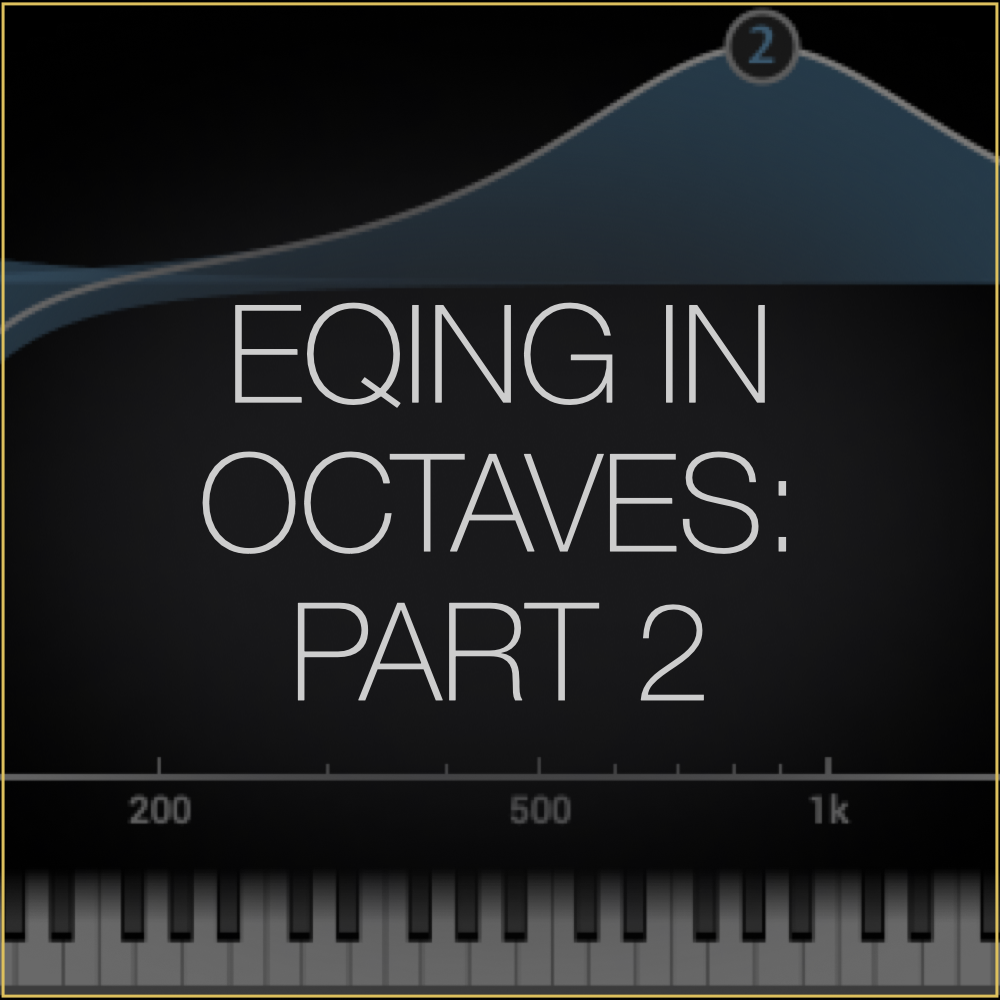
Best Practices When Working with Mastering Engineers
I sometimes get a lead single that sounds drastically different from the rest of the project. Maybe it was mixed by a different engineer, or just labored over with more detail and intensity. And sometimes, I’m not even told the song is part of a full-length project. Then, weeks later, the rest of the EP or LP shows up—and it’s tough to match tone or loudness because the new material feels completely different.

Creating Mixes That Translate on Any System
In our recent emails, we explored how to simplify equalization by working with octaves. If you missed them, you can check out the full breakdown here, where I go through all 10 octaves and share practical tips for approaching each one. But EQ decisions aren’t just technical—they’re shaped by how we hear sound, how listeners interpret it, and our own personal preferences. Balancing these three factors is key to crafting a well-rounded mix, yet it’s often one of the biggest challenges in mixing and mastering.

Struggling with Low End in Your Mix? Try This...
You have heard me say this before, but as engineers, we tend to overcomplicate things. Occam's Razor suggests that the simplest solution is always the most effective.

GOLD CLIP PACK 2025.2 is HERE!
The all-new GOLD CLIP PACK 2025.2 is HERE!
We’ve made oversampling easier—no more digging through menus. Now, it’s right there in the new Schwabe Digital Footer, just like in Orange Clip 3. A smoother, more intuitive experience for making the nuanced decisions that oversampling requires.
This update includes a fix for M4 Macs and other small improvements as well.

ORANGE CLIP 3 is HERE!
The all-new ORANGE CLIP 3 is HERE!
Orange Clip 3 redefines multi‐band clipping with a groundbreaking linear phase filter-bank, unrivaled routing capabilities, and an intuitive workflow. Fully reverse compatible with OC1, Orange Clip 3 is a seamless upgrade that installs without the need for reauthorization and still appears in your DAW as "Orange Clip." However, it is anything but the same; this powerful upgrade empowers you to push the boundaries of clipping, distortion, and tone shaping, unlocking endless creative possibilities for your mixes.

01) Legendary Sound, Modern Innovation
ORANGE CLIP 3 is inspired by the unique stock clipper found in one of the most legendary digital audio workstations for modern music production.The clipper itself is simple, but it has a bold and unique sound that you have heard in many modern productions. It inflates low frequencies, crunches highs, and smooths the mid-range in a relaxed and pleasing way.

02) Mastering the Essentials of ORANGE CLIP 3
When you first insert ORANGE CLIP 3, it presents itself as an intuitive, straightforward tool that hardly requires a manual. At its core is the ORANGE knob—prominently placed in the center—your primary control for shaping the sound.

03) How to Use Multi-Band Clipping in ORANGE CLIP 3
In the last few emails, I shared a bit about why I built Orange Clip, its sound, and some basics of its functionality. Today, I want to dive deeper into our straightforward and powerful multi-band setup. The simplicity and power of our multi-band design are what make Orange Clip 3 truly unique, and understanding it is key to unlocking its full potential.

04) Exploring Transfer Functions: The Foundation of ORANGE Processing
To understand what a wave shaper is, it's essential first to learn how to read a transfer function. A transfer function visually represents the relationship between the input signal and the output signal in a non-linear process like Orange Clip 3.

05) Introduction to Wave Shaping: The Science Behind ORANGE CLIP 3
Wave shaping is a process that alters the shape of an audio waveform to create tonal changes or introduce distortion. It works by applying a transfer function, which defines how input signal levels are transformed into output signal levels. This can result in subtle harmonic enhancement or aggressive distortion, depending on the curvature of the transfer function. The key to effective wave shaping is controlling this curve to achieve the desired sonic character without unwanted artifacts.

06) Sculpting Dynamics with the ORANGE Knob
In the last email, we introduced how wave shaping works. Now, let’s take a closer look at the ORANGE knob in Orange Clip and how it controls the size and shape of the wave shaping applied to your track. Think of it like a compressor threshold: it determines where wave shaping begins, measured downward from the clip ceiling.

07) Exploring the Controls and Displays of ORANGE CLIP 3
Let’s take a closer look at key commands, controls and displays in Orange Clip 3, and how they impact your workflow.

08) ORANGE CLIP 3: Redefining Parallel Processing
Orange Clip 3 features four versatile distortion circuits, each capable of dry/wet blending. The three band-based clippers can be blended individually with a traditional dry/wet mix, while the main clipper processes their combined output before passing through the true parallel mixer. This layered approach unlocks endless creative possibilities. Below, we’ll explore some of these features in action.

09) Oversampling Made Simple with ORANGE CLIP 3
Both Gold Clip and Orange Clip are designed to deliver a consistent sound, regardless of your DAW's sample rate. To achieve this, the oversampling rate dynamically adjusts based on the session's sample rate. This ensures that High, Pristine, and Extra Pristine modes sound identical, no matter the sample rate you’re working with. Let me explain how it works.

10) Inside the Innovation: Schwabe Digital Linear Phase Filterbank
We spent a year researching, testing, and refining our filterbank technology. Our expectations were ambitious: we set out to create a truly linear phase filter bank with minimal pre-ringing, ultra-low latency, and exceptional CPU efficiency—essentially, everything without compromise.

11) How ORANGE CLIP 3 Matches its Inspiration
We spent a lot of time trying to determine the exact mathematical equation that makes ORANGE CLIP 3 sound so good, and that equation matches its inspiration in every detail: dynamics, harmonics, and overall tone.

EQing in Octaves: Part 1
This is the first of a three-part email series designed to simplify your approach to EQ and help you make better mixing decisions.
We measure sound frequencies on a logarithmic scale in Hertz (Hz), or cycles per second. While essential for describing audio, this unit can feel abstract and disconnected to how we think about and create music. For example, a frequency of 100 Hz means a sound wave vibrates or oscillates for one full cycle at 100 times per second.

EQing in Octaves: Part 2
Last time, we explored how thinking in octaves can simplify your EQ process, making it feel more musical and intuitive. Today, we’ll take that concept further by dividing the 10 octaves into 5 key frequency bands—low, low-mids, mids, high-mids, and highs—and discussing how each band shapes our perception of sound. This week, we’ll focus on the first three bands and cover the remaining ones next week. Conveniently, each of the 5 bands spans roughly two octaves. Let’s explore them.

EQing in Octaves: Part 3
Last week, we explored the lows and mids—the fundamental frequencies that give your mix its weight, warmth, and power. Today, we'll focus on the high-mids and highs, where brightness and articulation live. These frequencies are crucial for bringing excitement and clarity to your mix, but they require precise placement to avoid harshness. Let's talk about how to craft a top end that's clear, balanced, and musical.

GOLD CLIP PACK is OUT NOW!
We have exciting news for GOLD CLIP users!
To show our appreciation for your support, we're upgrading all Gold Clip users to the new GOLD CLIP PACK!
Gold Clip Pack includes the original Gold Clip that you know and love, plus the FREE add-on plugin, GOLD CLIP track.
